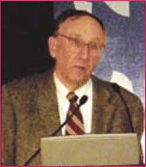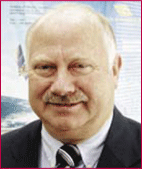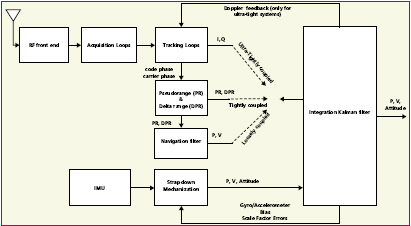Articles in the Articles Category

Jack Dangermond shares his observations with Coordinates
Challenges that Coordinates should focus on
A big challenge is integrating the surveying profession with the GIS profession. There’s a growing tension between them. One of the bridges that I want to accomplish this year is integrating the technology so the surveyors can have tools within …

Prof Dr Güenter W Hein, Director of the Institute of Geodesy and Navigation, University FAF, Munich, on GNSS trends, applications and challenges
Please tell us about the focus of research at your Institute.
The Institute of Geodesy and Navigation of the University FAF Munich with presently more than 30 research associates from various …
April 2007
63rd Annual Meeting, Featuring New Bio Navigation Workshops
April 23-25, 2007, Cambridge, MA
www.ion.org
2nd National GIS Symposium in Saudi Arabia
23-25April, 2007 Al-Khobar, Saudi Arabia
info@saudigis.org
http://www.saudigis.org/
May 2007
TimeNav’07 – ENC-GNSS 07
29 May – 1 June 2007
Geneva International Conference Center,Switzerland
Spatial Sciences Institute Biennial International Conference
14-18 May, Hobart, Tasmania, Australia
www.ssc2007.com
Intergraph 2007
21-24 May, Nashville, Tennessee, USA
http://www.intergraph2007.com
International Conference on …

Over the years topographic mapping generally involved acquisition of data related to the features of the earth, its environs of user’s interest and its graphic depiction on a suitable media, generally paper, ensuring that the accuracy specifications, which depend upon the type of end product, are strictly adhered to.
Over the years topographic mapping generally involved acquisition of data related to the features of the earth, its environs of user’s interest and its graphic depiction on a suitable media, generally paper, ensuring that the accuracy specifications, which depend upon the type of end product, are strictly adhered to.

Global Navigation Satellite System (GNSS) consists of GPS, GLONASS and Galileo which is still under construction by the European Union. GPS is the most widespread GNSS in the world and applies successfully in so many fields such as positioning, navigation, geodesy, mapping, timing and so on. However, GLONASS has not done its work well for about ten years because of lack of funds. In summer of 2006, Russia’s GLONASS program continued its comeback and will have a full 24-satellite constellation by the end of 2009. Notably, China has a regional RDSS system using three geostationary satellites since 2000.
INS is a self-contained positioning and attitude device. In other words, it meets the all-environment requirement. The primary advantage of using INS is that velocity and position of the vehicle can be provided with abundant dynamic information and excellent short term performance. The main shortcoming is that the INS accuracy degrades greatly over time.
OnFinally, Google agreed.
Agreed to blur the pictures of sensitive Indian establishments.
Recently, Google Earth shocked many.
Many took the development as the deathblow to the issues like
“non-accessibility/non-availability of spatial information”.
However, many got worried, more than ever before,
about the security implications.
The issue was more important as many contended that “such
exposures” were selective in nature and not for all …
February 2007
Integrated Water Resource Management- (IWRM-2007)
5-7 February, Banglore, India
www.angelfire.com/planet/kerf/
Geomatica 2007: Geomatics …

As part of the 17th United Nations Regional Cartographic Conference for Asia and the Pacific (UNRCC-AP) held in Thailand in September 2006, Working Group 3 of the Permanent Committee for GIS Infrastructure for Asia and the Pacifi c (PCGIAP) organised a one-day international workshop (21st September 2006) on the‘Integration of Built and Natural Environmental Datasets within National SDI Initiatives’. The workshop was conducted with the support of the Centre for Spatial Data Infrastructures and Land Administration, the University of Melbourne.

GPS has demonstrated a stellar performance ever since its inception. In fact the satellites typically operate beyond their expected lifetime which potentially creates obstacles to the timely modernization of the system. GPSGAP (GPS, Geodesy and Application Program) is an online educational initiative by the University of Maine that offers in-depth knowledge about this fantastic system and its uses.
My enthusiasm for GPS began when testing the experimental Macrometer receiver during the summer of 1982 at M.I.T. over a 30 km baseline from Woburn, MA, to Mount Watchusett. The satellite visibility ranged from about 6 p.m. to midnight in New England. Many of the sunset watchers at the summit were puzzled by my activities and impressed by the huge piece of equipment in the back of my station wagon, the abundance of cables, and the strange looking antenna (so they thought). Their puzzlement about what I was up to was refl ected in some of their comments, such as“Is this thing taking off?”, or “Are you on our side?” Of course, there was plenty of time until midnight to be entertained by Fourier transforms and such on the computer screen, and to ponder the unlimited potential of GPS. Whatever has evolved since those days in terms of civil uses of GPS needs no further explanation.

In India, for topographical mapping, we are using an old Geodetic Datum (reference ellipsoid on which the coordinates: Latitude and Longitude are projected, and mapping is carried out), called Everest 1880, defined by the work of Col. George Everest (one of the greatest Geodesists, for whom the highest peak in the world is named). It is a local datum, best-fi tting for India (as in 1880), but not fi tting the Earth as a whole in the best possible manner.







 (5.00 out of 5)
(5.00 out of 5)